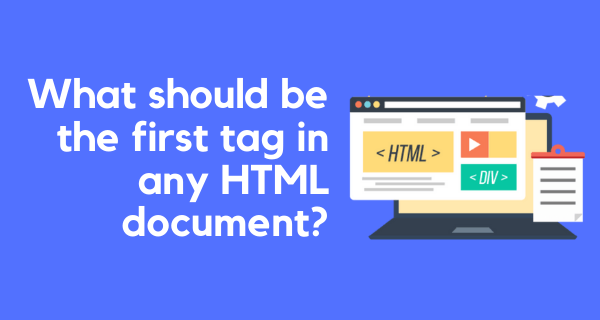
When it comes to creating a website, HTML is the foundation that it is built upon. HTML stands for Hypertext Markup Language, which is used to create and structure content on the web. One of the most important aspects of HTML is the first tag that appears in any HTML document. In this article, we will explore what the first tag in an HTML document is and why it is important.
The First Tag in an HTML Document
The first tag in an HTML document is the !DOCTYPE declaration. This tag tells the web browser which version of HTML is being used to create the website. It is important to include this tag at the beginning of any HTML document because it ensures that the web browser is using the correct rules to display the website.
Why is the First Tag Important?
The !DOCTYPE declaration is important because it ensures that the web browser is using the correct rules to display the website. Without this declaration, the web browser would have to guess which version of HTML is being used, which could lead to errors in the way the website is displayed. By including the !DOCTYPE declaration, you can ensure that your website is displayed correctly across different web browsers.
Different Versions of HTML
There have been many different versions of HTML over the years. The current version is HTML5, which was released in 2014. Before HTML5, there were versions such as HTML 4.01, XHTML 1.0, and XHTML 1.1. Each version of HTML has its own rules and specifications, which is why it is important to declare which version of HTML is being used in the !DOCTYPE declaration.
MECE Framework for Understanding HTML Tags
To better understand HTML tags, we can use the MECE framework. MECE stands for mutually exclusive, collectively exhaustive. This framework is used to ensure that all possible options are considered and that there is no overlap between them. Using the MECE framework, we can categorize HTML tags into two groups:
Structural Tags
Structural tags are used to define the structure of a webpage. Some common structural tags include:
- html: This tag is used to define the root element of an HTML page.
- head: This tag is used to define the header section of an HTML page.
- body: This tag is used to define the body section of an HTML page.
- h1 to h6: These tags are used to define headings of different sizes.

Formatting Tags
Formatting tags are used to add style and formatting to the content of a webpage. Some common formatting tags include:
- p: This tag is used to define a paragraph of text.
- strong: This tag is used to define text that should be displayed in a bold font.
- em: This tag is used to define text that should be displayed in an italic font.
- a: This tag is used to create a hyperlink to another webpage.
Conclusion
In conclusion, the !DOCTYPE declaration
is the first tag that appears in any HTML document. This tag is important because it tells
the web browser which version of HTML is being used to create the website. By including this
tag, you can ensure that your website is displayed correctly across different web browsers.
Additionally, using the MECE framework can help you better understand the different types of
HTML tags and how they are used to structure and format content on the web
If you enjoyed this piece, we've crafted a related article delving into Single row functions in SQL. Explore it here.
final thought


by Harsh Verma
final thought

